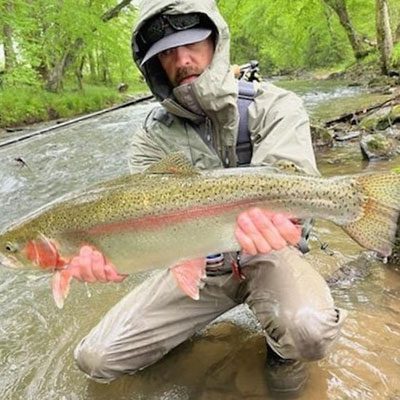As the month of May has come to an end, rising trout are quickly learning to take tiny morsels off the water’s surface. As the temperatures heat up, so will the dry fly action for trout. On our last several trips, we’ve been keying in on caddisflies. It’s definitely dry fly time in the mountains. Let’s go into a little detail about caddisflies.
Caddis goes through different stages in their lifetime starting out as tiny eggs that are practically invisible to the human eye. They are laid onto the surface of a stream where the eggs trickle down onto the steam floor. The higher the quality of stream with less human disturbance, farm runoff, pollution and so on, the better the survival rate of the insect’s eggs. These eggs then hatch into larva where they either build a case of tiny rock around the body, use small sticks to create their case (locals call them “stick bait”) or they may be free form caddis that build a tiny web between rocks. When the cased caddis begins to hatch, it will rise to the surface as an adult emerger. Once its wings dry, off it will fly to return to lay eggs. After laying its eggs, the caddisfly will begin to quickly deteriorate or perish on the stream where it may be eaten by a trout. This we refer to as rising trout.

One bit of advice to aid you in identifying rising trout: Trout normally rise above the water to catch a caddisfly, due to their bouncing nature while laying eggs. We refer to this as a “splashy rise”. Most mayflies will land on the water’s surface to deposit her eggs causing trout to normally sip them from the surface. We refer to this as simply a “sipping rise” that leaves small dimple rings on the water’s broken surface.
If you are a beginner wanting to learn how to fly fish, we have a great staff of instructors who have been schooled in the art of fly fishing. One of the best ways to learn about fly fishing is to spend time with those of us who are professional, full-time guides. Don’t forget to ask about our float trips! Currently, we are doing floats on the Toccoa Tailwater and on the upper Toccoa as well. Give us a call to book your amazing trip on the water and don’t forget that we offer gift certificates!
Reel ‘Em In Guide Service operates as an Orvis Endorsed Fly Fishing Outfitter in North Georgia’s Historic High-Country region. They have been offering their services to fly anglers since 2001. They have permits to guide in Georgia, offer over 7 miles of private trophy waters across Georgia and operate float trips on the Toccoa River in GA. www.ReelEmInGuideService.com; (706) 273-0764.
